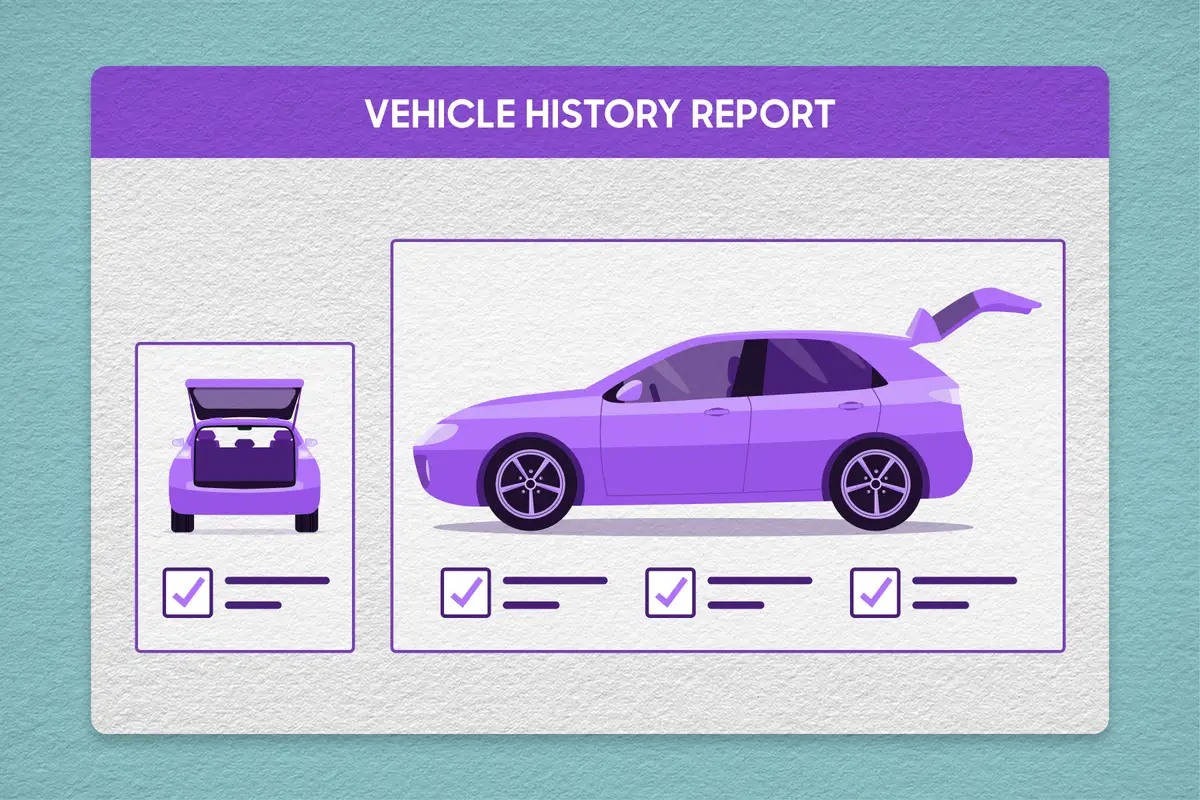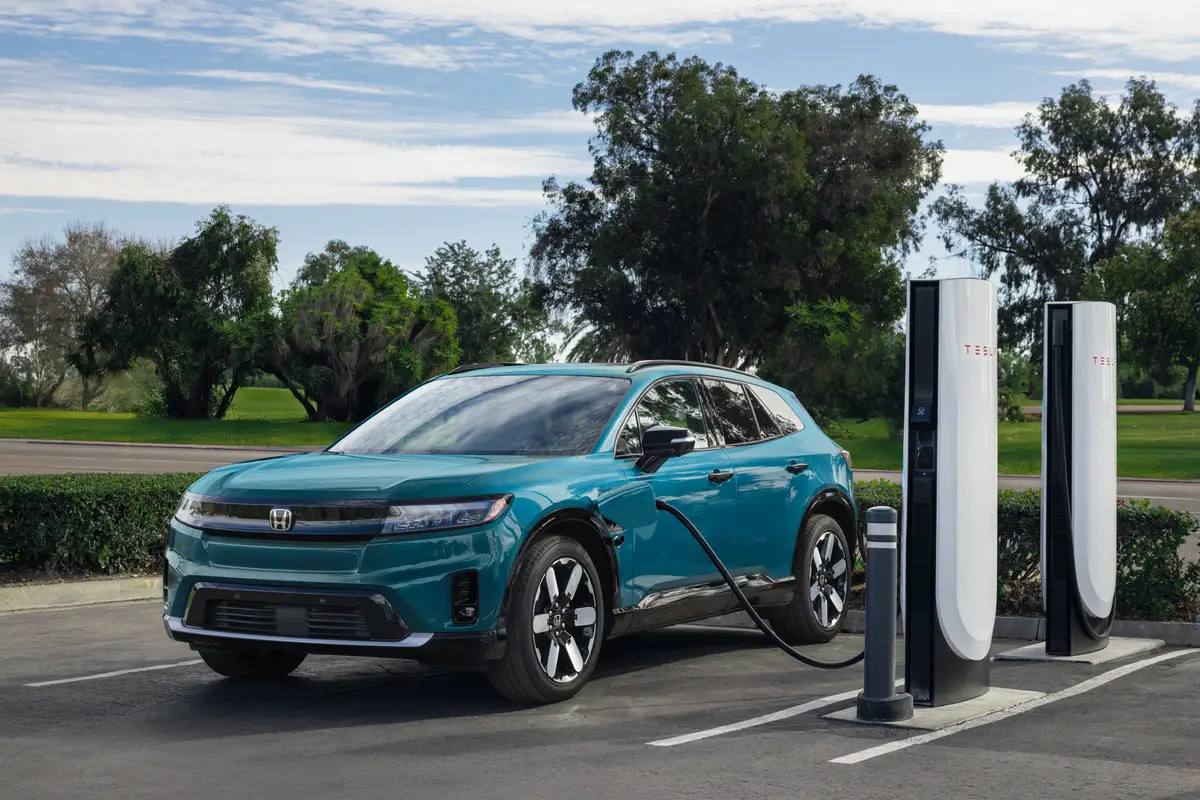Why Does My Car AC Smell Like Vinegar?

If you notice a vinegar smell when you turn on your car’s air conditioning, it’s most likely due to mold or mildew that has built up somewhere in the ventilation system. Since mold and mildew tend to be caused by heat and moisture, this is a particular problem in hot, humid climates. There are other possible causes for the smell, but they’re much less likely.
Related: Air Conditioning: What You Need to Know
Besides being annoying, mold and mildew can attack your respiratory system and cause health issues, so it’s best to get this taken care of promptly. There are some fairly simple fixes you can try to do yourself that we’ll cover below, but past that, you may need to call in a professional mechanic.
Generally speaking, the flow of air in your car starts with a fresh-air intake near the base of the windshield (sometimes outside the car, sometimes under the hood) that’s sucked in by the fan. From there, it may go through a cabin air filter (not all cars have one), then the air-conditioning evaporator (what gets cold), then the heater core (what gets hot), then out the various vents throughout the interior. However, this route can be different depending on the car.
If you notice the vinegar smell only when you turn on the air conditioning — and you’ve had the fan blowing before that, either in vent mode or with the heat on — the air route may differ from the above in that it’s diverted to flow through the evaporator only when the A/C is on. That would indicate the mold or mildew is in the evaporator or that the evaporator is leaking refrigerant, or you’d probably always smell it. (See No. 9 under “The Procedure” below.) But the steps for attacking the problem are pretty much the same either way.
Note that most cars have a recirculation mode (sometimes labeled “Recirc”) for the ventilation system. Sometimes it’s activated by a separate button, but the “Max A/C” setting will also kick it on. This mode draws air from inside the cabin and recirculates it rather than drawing fresh air in from outside. You should make sure this is turned off for all procedures below.
The ‘Home Remedy’
What you need to do is kill the mold or mildew. While it’s usually caused by moisture, it can also be caused by organic matter, such as leaves or dead bugs.
When your car has been running for quite a while with the air conditioner on, check to see whether water is dripping from the passenger side of the car under the windshield area. This might be condensation from the A/C evaporator under the dash, and it should be dripping. If you don’t see drips, check to see if the carpet in the front passenger footwell is damp. Both a lack of dripping and damp carpet indicate a problem — and what might be causing the smell.
You’ll need to start by getting some kind of spray disinfectant. While Lysol is a popular household spray, you might have better luck with one specifically designed to be used in car ventilation systems. If you go to a hardware store, you may find some air-conditioning sprays, but they could be designed for home air conditioners rather than for a car; if you can get to an auto parts store, you’ll likely find the right kind. If your car has a cabin filter, you might want to consider buying one, as the procedure will suggest removing the old one and this would be a chance to start fresh. (It’s often recommended to replace cabin air filters every 30,000 miles or so, depending on driving conditions.)
More From Cars.com:
- Why Does Your Air Conditioning Need Recharging?
- Common Heating and Air-Conditioning Problems
- Why Is My Car Leaking Water?
- Why Does My Car Smell Like Rotten Eggs?
- More Service Articles
The Procedure
1. Start your engine and roll down the windows. (You don’t want to be breathing the disinfectant for any length of time.)
2. Turn the temperature to full cold and select Vent mode, but don’t turn on the air conditioner.
3. Turn the fan to high and let it blast for a few minutes. This can help dry up the moisture. Note whether you smell the vinegar scent afterward. (This could assist a mechanic later if things come to that.)
4. Once the engine is warmed up, turn the temperature to full hot and select Heat mode. Let that blast awhile. This, too, can help dry up moisture.
5. Usually, newer cars have cabin air filters. If your car has a cabin filter, it’s best to remove it, as it may block some of the disinfectant spray you’re about to use. (If you’re not sure whether your car has a cabin filter, try looking it up in the owner’s manual, or you can do a web search for your vehicle make, model and year.) Note that getting to the filter might require removing the glove box — or some procedure more complicated — so you may be getting into an area that’s past what you want to do yourself. If you can get it out, you should try to vacuum it clean or replace it. If you can’t remove the cabin filter, you can continue with this procedure, but it likely won’t work as well.
6. Turn on the air conditioner with the fan on high and see if you still notice the vinegar smell.
7. With the fan still on high, you can check for where your air-intake vents are by either putting your hand over the grilles or by using a strip of tissue paper; as mentioned, they might be on the outside at the base of the windshield or under the hood. (If it’s the latter, you may need to remove a cover.)
8. Once you find the air intakes, spray the disinfectant into all of them for a total of about 30 seconds, or roughly half the can. Then keep the engine and A/C running awhile. If that seems to have eliminated the smell, you’re done. (However, wait on your victory dance until it has stayed away for some time; you may have only reduced the amount of mold or mildew, not killed it entirely.)
9. If the smell is still there — or returns later — and you didn’t see drips underneath the car or you found the front passenger-side footwell to be damp, it’s possible the drain hose that’s supposed to route condensation from the A/C evaporator to the ground is plugged. In that case, the water might just pool at the bottom of the evaporator and cause the mold or mildew. A lingering smell can also mean the evaporator was too dirty to be cleaned in the manner described and may need a more thorough cleaning. If you can get to the evaporator, which is typically located under the dash and won’t be easy to access, you can try checking the hose and cleaning the evaporator with a brush and more of the spray, but this might be the point you call in the professionals.
It could also mean you have a leak in your air-conditioning evaporator (or the hoses leading to it) under the dash. What would be leaking is the refrigerant that gets the evaporator cold. (This refrigerant used to be called Freon, its brand name.) The refrigerant can give off a smell something like vinegar and isn’t healthy to breathe. If this is the case, the loss of much refrigerant would cause the A/C to stop blowing out cold air after a while, and repairing it is probably a job for a professional.
Other Possible Causes
It’s discomforting to think about, but it’s possible a mouse or small lizard got into your ventilation system and didn’t make it out. While they’d likely be stopped from getting into the interior by the cabin filter, evaporator or heater core, the situation isn’t likely to be resolved with disinfectant spray.
Also, because the air intake for your ventilation system may be in the engine compartment, there are some possible underhood sources for a smell in the interior — though they’d probably be there any time the fan is blowing. One is the battery; if it’s leaking acid, it can produce a smell akin to vinegar. Other leaking fluids (or even exhaust) can do the same, so if none of the above turns up a problem, it might be worth checking for leaks before seeking professional help.
Related Video:
Cars.com’s Editorial department is your source for automotive news and reviews. In line with Cars.com’s long-standing ethics policy, editors and reviewers don’t accept gifts or free trips from automakers. The Editorial department is independent of Cars.com’s advertising, sales and sponsored content departments.
Featured stories




